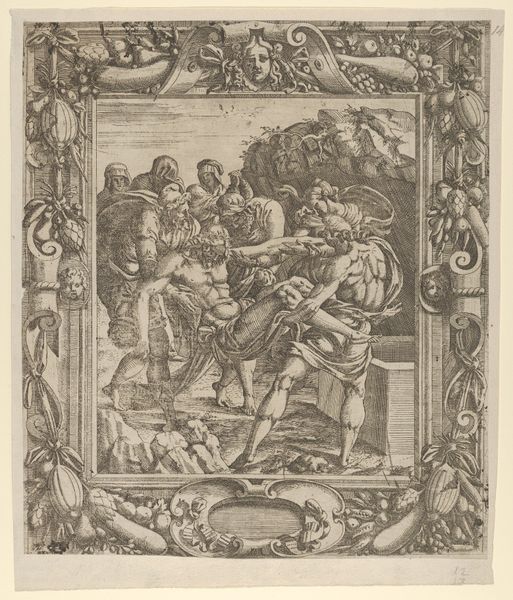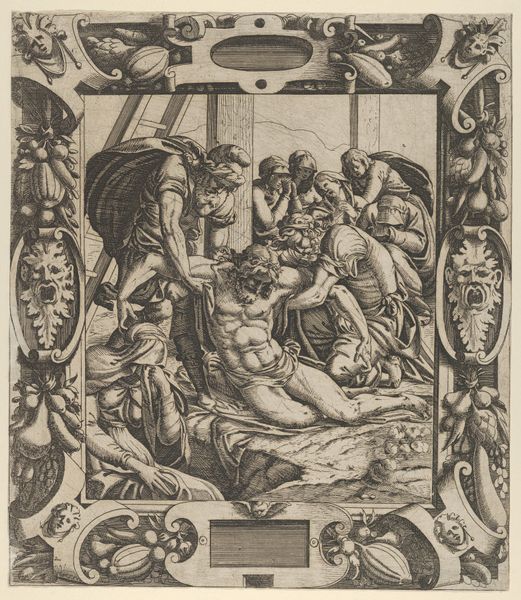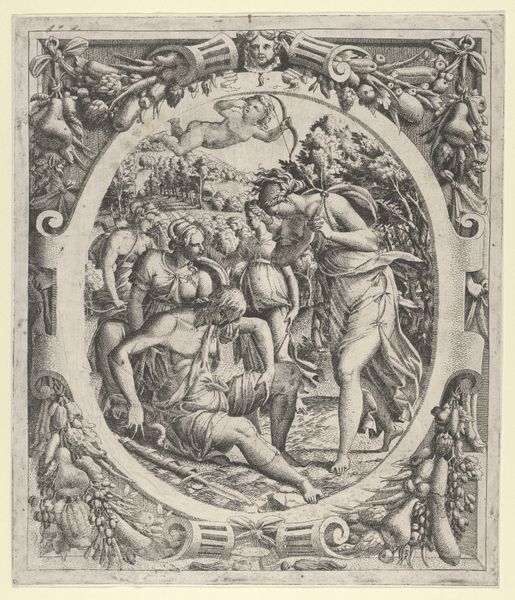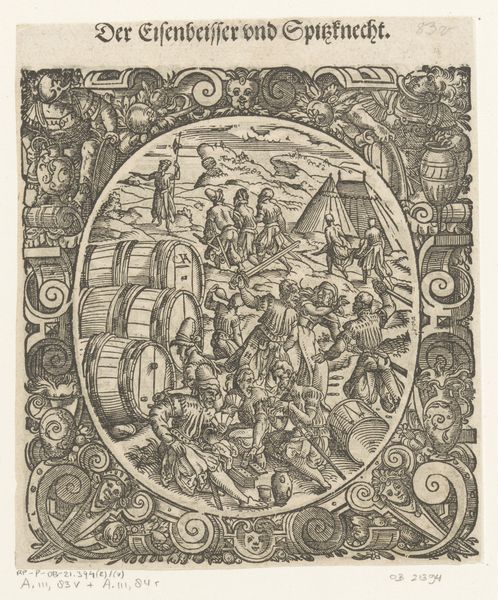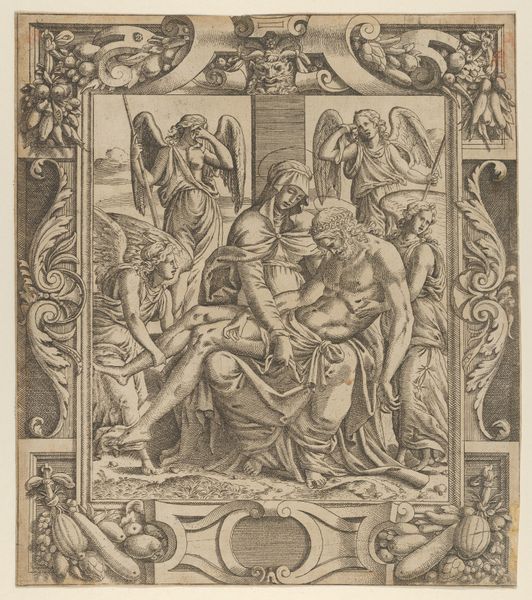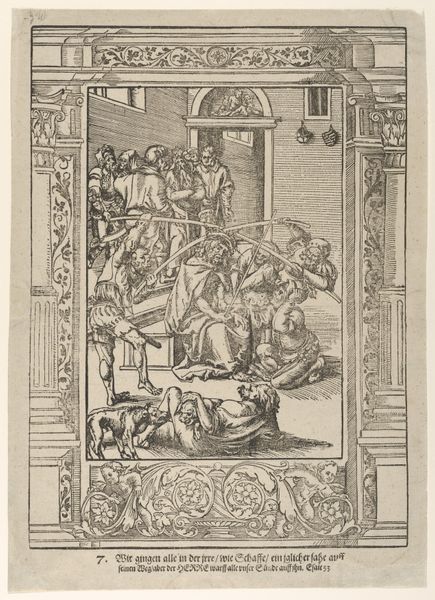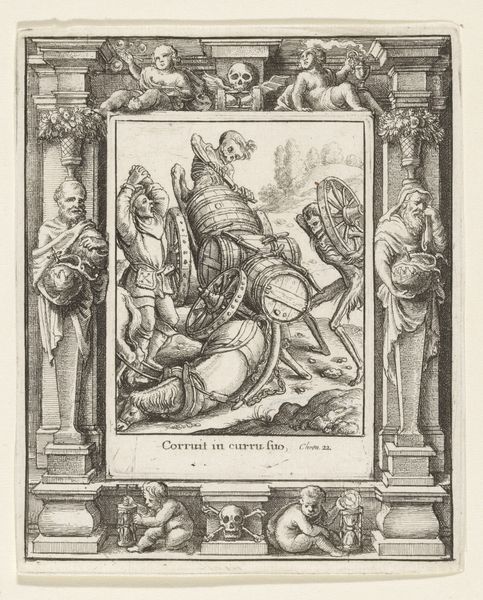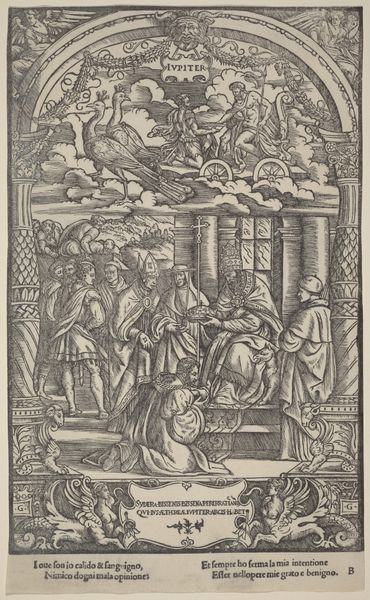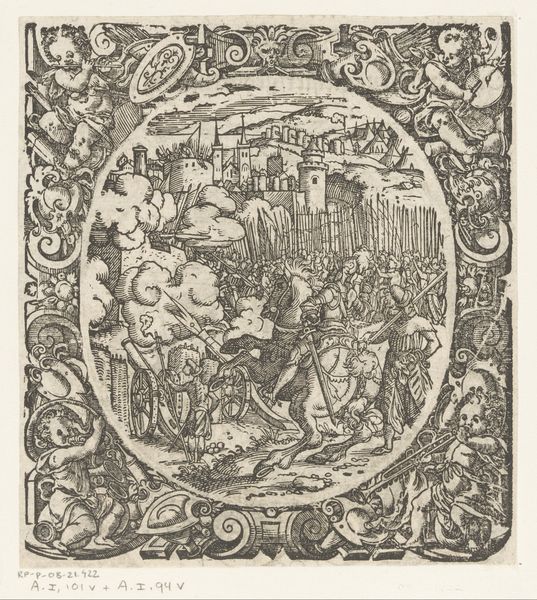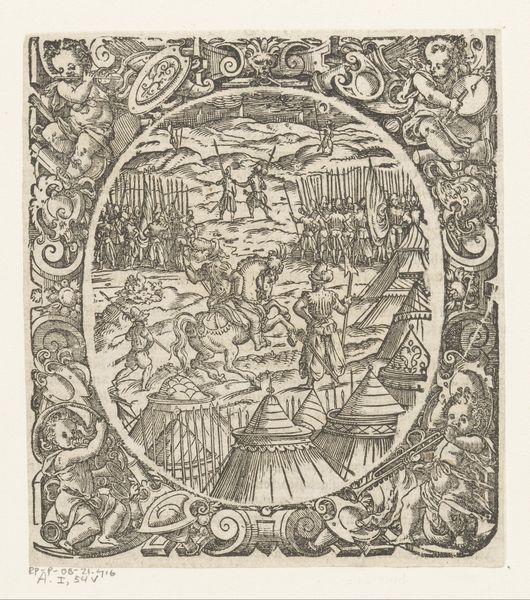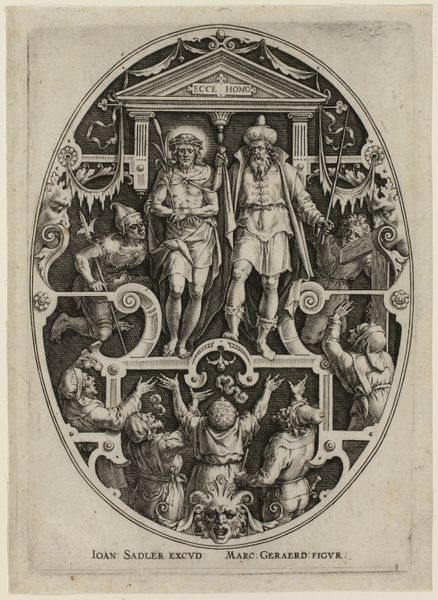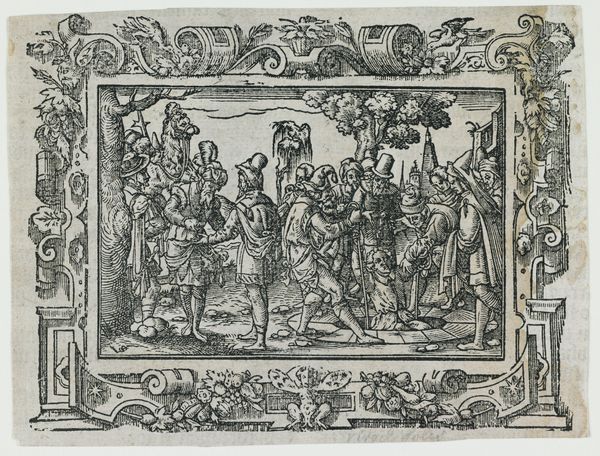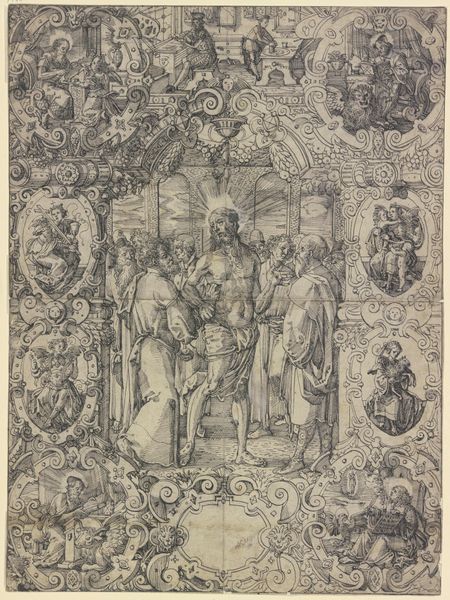
drawing, print, intaglio, engraving
#
drawing
#
narrative-art
# print
#
intaglio
#
figuration
#
history-painting
#
italian-renaissance
#
engraving
#
angel
#
christ
Dimensions: Sheet (trimmed): 13 1/4 × 11 5/8 in. (33.7 × 29.6 cm)
Copyright: Public Domain
Curator: I am immediately struck by the stillness in this scene, despite the implied frenzy of the lamentation. It’s like a hushed stage, the characters caught in a moment of profound grief. Editor: Indeed. The work we’re looking at, titled "The Lamentation over Christ," is attributed to Jean Mignon and dates from sometime between 1535 and 1555. It is currently held at the Metropolitan Museum of Art. We can observe, technically, it's an engraving, employing the intaglio process. Mignon’s delicate lines create a complex composition filled with figures surrounding the body of Christ after the crucifixion. Curator: Engravings always feel like such painstaking labors of love, don't they? It’s a history painting that seems simultaneously monumental and intimate, pulling you into its sorrow. Look at the light caressing Christ’s form; he becomes the focal point not just compositionally but emotionally as well. Editor: The Italian Renaissance influence is undeniable here. Observe the artist's careful rendering of musculature, the classical drapery, the echoes of ancient sculpture—all contributing to the image’s gravity. Yet, I find it compelling that Mignon set this tragic scene within a decorative border—festoons of fruit, masks, and even angelic figures—which could imply cyclical renewal of life overcoming mortality, but this clashes with the solemn depiction inside the frame. Curator: It's as if he couldn’t resist celebrating the beauty even in the face of such devastation, which strikes me as profoundly human, and perhaps optimistic in its own weird way. I love the contrast; like adding a string quartet to a dirge, but who am I to say it wasn’t the goal to create such juxtaposition. What does the material tell you here, more generally, though? Editor: The use of printmaking—specifically engraving—suggests broader accessibility. Unlike unique paintings or sculptures, prints allowed wider audiences to contemplate religious narratives, expanding the work's didactic function beyond the elite. And that in itself gives the engraving additional texture and importance. Curator: Agreed, knowing this could have touched so many lives in its time only deepens the viewing experience now. I appreciate how the composition manages to evoke both chaos and reverence—a hard balance to strike! Editor: It seems Mignon invites us to not merely witness lamentation but, also, contemplate the power of shared grief to become transformative experience—it does this beautifully!
Comments
No comments
Be the first to comment and join the conversation on the ultimate creative platform.
